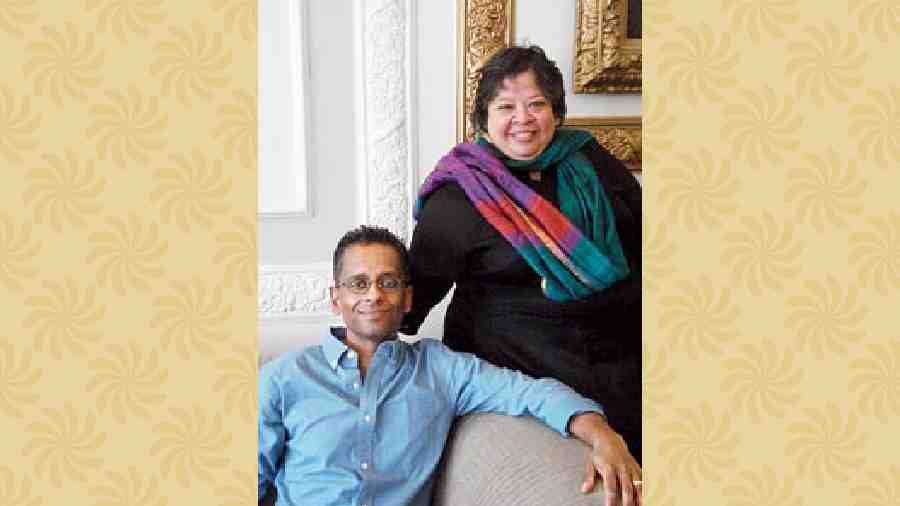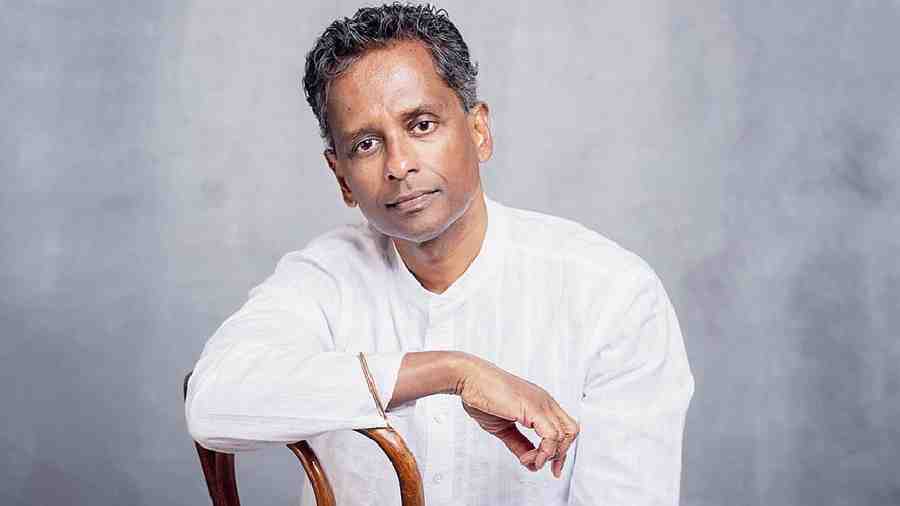In his recently published novel Mansions of the Moon, Shyam Selvadurai spins a breathtaking tale about Princess Yashodhara, the much-neglected wife of Buddha, and creates a refreshing new story that raises relevant questions about the role of women, explores the role of the courtesan in improving sexual performance in a marriage and re-establishes the core values of Buddhist philosophy.
Clever and inventive, celebrated Sri Lankan-Canadian writer Shyam Selvadurai has trained his sights this time on the hoary and somewhat thin Pali canon that is perilously skinny about Yashodhara, Gautama Buddha’s beautiful, young, wise and impressive wife. With a mastery of an archaeologist, he has ferreted out just a fistful of gems from millenia ago, and with captivating language that spans poetic prowess, beautiful canvas-like paintings and thoughtful, meditative passages of philosophical musings on Buddhism, and psychological ponderings on marriage, the author is able to transport the reader into the mind of a splendid young woman who surpasses any character he has ever created in his three earlier novels. The neglected fact that Gautama and Yashodhara were soulmates over many lifetimes and that they had an electric attraction and mutual respect, is conveyed here with an urgency to the reader, and almost immediately establishes a closeness between reader and writer.

Selvadurai is celebrated for his ability to make South Asian cultures, folklore, legends and myths accessible to Canadian and world literature readers as a diasporic writer who lives in Toronto. Like many Sri Lankans who wanted to avoid the civil war in their embattled homeland in the 1980s, Selvadurai came to Canada when he was 19, with his parents. A Davis Cup player from Sri Lanka, his father had to settle for being a tennis coach to provide Selvadurai with the education and opportunities that have contributed to the success of this highly felicitated, award-winning author that Canada boasts as one of its own. A self-professed Buddhist, who has believed in the teachings and the spiritual worth of Buddhism, Selvadurai holds his mother as a beacon of calmness and inspiration who taught him to overcome challenges to understand that impermanence is the only permanent quotient in life.
For Selvadurai, to write about women is to write about being marginalised in his own life by patriarchy. The gay writer has consistently maintained that in all his novels — Funny Boy, Cinnamon Gardens, The Hungry Ghosts and now, in Mansions of the Moon — women characters represent the voices of those who are most vigorously controlled by patriarchy. As a distinguished author visiting my class of senior-year undergraduates at the University of Toronto, he had stated categorically that as a writer he wanted to be seen “not as a Sri Lankan writer, nor a gay writer, nor an Asian hyphenated Canadian writer. I am just a bloody writer”, he emphasized. The stories Selvadurai writes about, for instance about Arjie Chelvaratnam, the young protagonist of Funny Boy who is ostracised by his family for his sexual orientation, point the reader to the universal commonality of masculinist control, which is menacing, pigeon-holing and stereotyping, and controlling of those who do not conform.
Mansions of the Moon is a quote from one of the poems that Buddhist bhikkhunis or nuns used to collect. It warns about us about “something false” about worshipping. The novel is a dangerously ambitious project because it attempts to tell a story of an epic subject, and one suspects that in the hands of a less masterful writer, might have suffered a terrible fate. However, with Selvadurai as the scribe, a master weaver of Eastern legend, folklore and fantasy with Western narrative style and realism, this novel sets a new benchmark in world literature where history becomes fiction, and fiction history, as posited by Hayden White, the author who wrote Metahistory.
Selvadurai is in august company. His celebrated colleague Sri-Lankan Canadian writer Michael Ondaatje maintains: “As a writer, one is busy with archaeology.” At once, digging deep within himself — “In creating any character I go to a very private part of myself” — and reading voraciously about the cultural ethos and social stratifications and milieu of ancient Kapilavastu, Prince Siddhartha’s kingdom’s capital, Selvadurai is able to share fascinating nuggets about food, relationships, cultural markers of the ancient historical period intimately with the readers. Selvadurai confesses willingly to leaning felicitously on the evocative translation of The Sinhala Yasodharavata (The Story of Yasodhara) and the Sinhala Yasodharapadanaya (The Sacred Biography of Yasodhara) by the renowned scholar Ranjinic Obeyesekere from Princeton University and the Pali canon to get up to speed about his subject. So Selvadurai seamlessly engages the reader in the remarkable intersectionality of history and fiction.

In picture, he poses with Julie Banerjee Mehta at the club
Selvadurai’s prose is haunting and memorable in its veracity and easiness. His language, for instance, right in the beginning of our meeting with Yashodhara, when she has been married for a very short time, and is just 16, leaves the reader catching their breath. Yashodhara, as is the custom of the times, is taken by her cousins Ananda and Aniruddha to visit the famous courtesan Vimala, to consult with her about her experiences in her marital bed, as a bride. The description of the lush green, birdsong-filled courtyard with a fountain spouting cool water is volubly suggestive of fecundity and a remarkable sensuality. The description of the legendary courtesan Amrapalli, in Vaishali: “Her beauty is unearthly”, and the banter of the courtesans about Ananda visiting them, and even Gautama Siddhartha, Yashodhara’s husband, being schooled in the ways of lovemaking by a famous courtesan in that mansion, transports the reader to a past and also successfully familiarises the reader to another space.
Scholar of Buddhist Studies, Sarah Shaw explains that the Pali Canon is known as “The Three Baskets”, and consists of Vinaya, the code of practice for monks; Sutras or stories and narratives and poems; and the Abhidharma, the highest teachings that attempt to describe what goes on in the mind at a particular moment, and how mind and matter flow in a continuous stream of consciousness. It is to Selvadurai’s credit that he has focused sharply on this aspect of Yashodhara’s character and constructed a novel about the psychological dimensions of a highly intelligent woman who goes on the same journey as her husband, to find a release from greed, lust and suffering and the cycle of rebirth. The story, compellingly told, presents the much-neglected, beautiful and strong Yashodhara as also being a sentient being whose journey to realisation comes not by leaving samsara, and becoming an arahant or mystic or ascetic, as her husband, the prince of the Sakya clan Siddhartha, did (abandoning his wife and son Rahula), but by staying in the hurly burly of being a single mother and living out her responsibilities.
Trenchantly argued, the reader understands that what the Buddha realises theoretically, Yashodhara comprehends through praxis. Thus Selvadurai resurrects the complex understanding of the many paths to nibbana in Mansions of the Moon, and highlights the reality that a woman can aspire for the path and that impermanence is the only permanent feature of life so attachment to any desire or object will inevitably cause sorrow and suffering.
Julie Banerjee Mehta is an author of Dance of Life and co-author of the bestselling biography Strongman: The Extraordinary Life of Hun Sen. She has a PhD in English and South Asian Studies from the University of Toronto, where she taught world literature and postcolonial literature. She currently lives in Calcutta and teaches English at Loreto College
